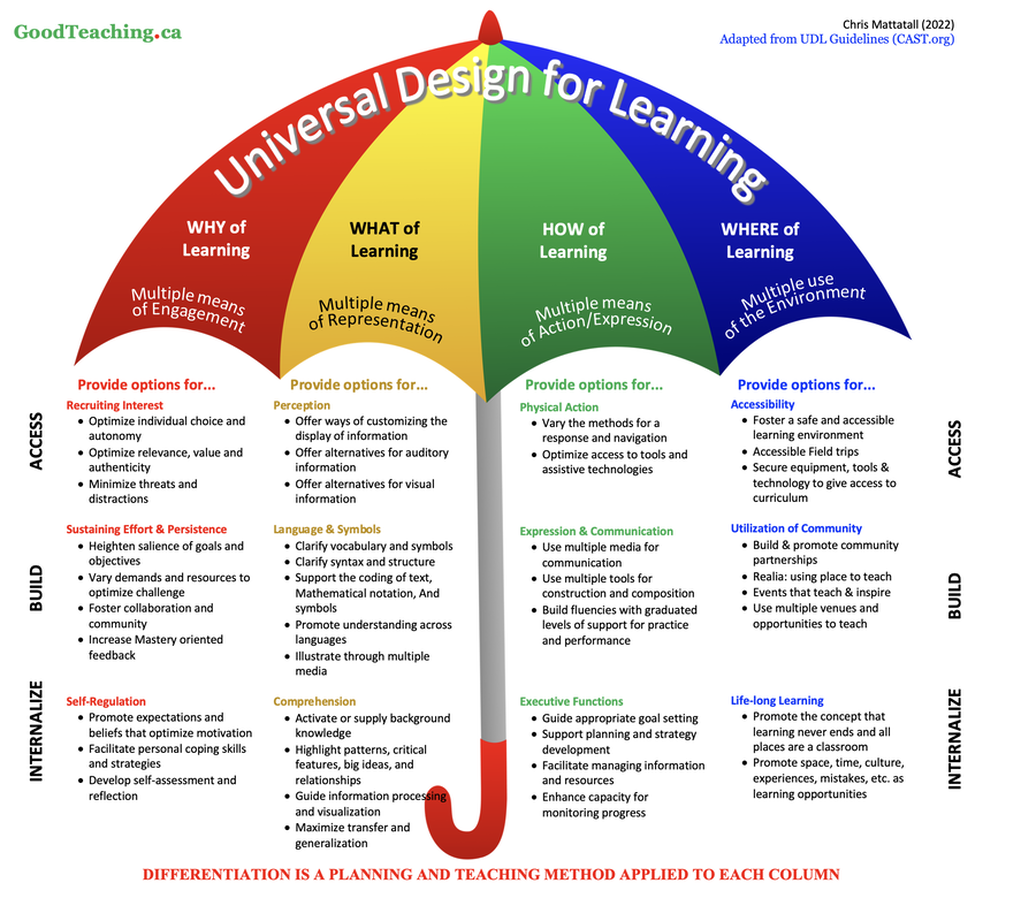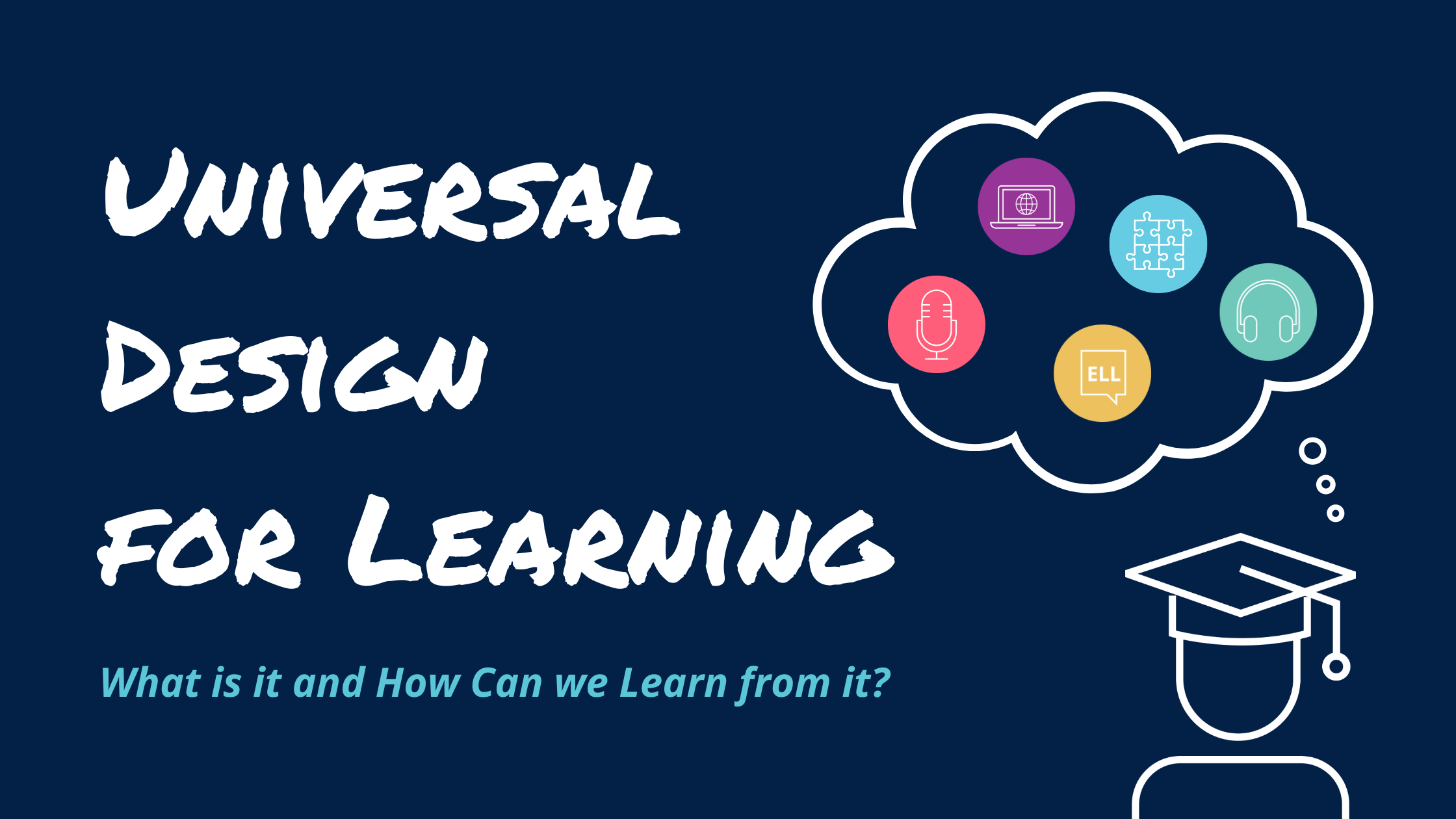Table Of Content

Learn alongside fellow coaches in a collaborative online learning environment. Educators empowered with UDL guidelines can create responsive curriculum and instruction that meaningfully accommodates the nuances of a diverse student body. Whether it is through written work, voice recordings, visual displays, or digital storytelling, providing alternatives is key.
Degrees & Programs

There are three principles in the Universal Design for Learning framework (CAST 2023). For example, closed captioning on TVs allows people with hearing impairments to see onscreen text of what is being said. If you’ve ever tried to watch the news or a game in a noisy restaurant, you probably used the closed captions to follow along. Waterford.org is a 501(c)(3)organization, and gifts aretax deductible as allowed by law.
Learning by Universal Design - Education Week
Learning by Universal Design.
Posted: Wed, 18 Jun 2014 07:00:00 GMT [source]
Online Learning Experience
Practicing UDL in courses means maximizing opportunities to learn by making room for a range of abilities and methods of expression. Following the principles of UDL, instructors go “beyond compliance” with the Americans with Disabilities Act (ADA) and aim to provide the maximum access to the greatest number of their students. By applying UDL principles, teachers can effectively instruct a diverse group of learners. They do this by building in flexibility in the ways learners can access information and in the ways students can demonstrate their knowledge. Universal Design for Learning (UDL) is a way of thinking about teaching and learning that helps give all students an equal opportunity to succeed. This approach offers flexibility in the ways students access material, engage with it and show what they know.
Many UO students have disabilities
These principles encourage educators to offer multiple ways for students to become involved with their learning, understand the information, and demonstrate their knowledge. Promoting equitable practices is not just about access; it's about ensuring that all learners encounter challenging and engaging learning experiences. What UDL brings to the classroom is a blueprint for equity, one that is critical in offering not just equality but also the recognition and celebration of every student's potential. At its core, UDL seeks to expand learning access by minimizing common obstacles such as those that are physical, cognitive, and organizational. These foundations help shape learning environments that are both effective and inclusive, thereby offering educators structured strategies to meet an array of student needs.
Build a Strong Learning Culture on Your Team - HBR.org Daily
Build a Strong Learning Culture on Your Team.
Posted: Tue, 06 Jun 2023 07:00:00 GMT [source]
Program Details
Universal Design for Learning uses inclusive instructional design principles to inform the planning, programming, and assessing stages of the teaching and learning cycle. This supports teachers to use evidence-based strategies and provide multiple options for students when planning teaching and learning experiences. Many of these practices are already used by teachers in NSW public schools. A pivot towards UDL means instructional goals, methods, materials, and assessments are not fixed but instead adaptable. This flexibility promotes equal opportunities for all students, removing barriers that often hinder the learning process, particularly for students with disabilities.
UDL Fact Sheet (TEAL)
It acknowledges that each student processes information uniquely, calling for varied ways of presenting material, expressing understanding, and keeping students engaged. Now, this education model is increasingly recognized as vital for inclusive and effective teaching. Introduced by educational researchers in the early 2000s, the Universal Design for Learning provides a framework for offering individualized support and inclusion to students.
Program Cost
This means developing a flexible learning environment in which information is presented in multiple ways, students engage in learning in a variety of ways, and students are provided options when demonstrating their learning. Universal Design for Learning (UDL) is a framework developed by CAST, an Understood founding partner. UDL guides the design of learning experiences to proactively meet the needs of all learners.
Past workshops listed usually include video, slides, and other documentation. You might notice that the digital accessibility of these items ranges (for example, some videos are carefully edited with chapters and accurate captions, and some are not yet). Offering these workshops was a part of our own collective learning processes; now that we know better, we can do better! UDLA trainings support the lesson planning process and help shift your ideas about what curriculum can be and how to get there over time.
Universal Design for Learning (UDL) is a framework that guides educators in designing learning experiences that meet the needs of all learners. It helps teachers move from a one-size-fits-all approach toward one that adapts to learner variability. UDL embraces the idea that we should have firm goals for students—using flexible means to reach those goals.
The importance of universal course design cannot be overstated, as it represents a foundational principle for ensuring equitable access and inclusive learning environments. Instructors can proactively address diverse learning needs and foster an environment where every student can thrive by incorporating flexibility, simplicity, and multiple means of representation, expression, and engagement. Moreover, universal design not only benefits students with disabilities but also enhances the overall learning experience for all learners, promoting engagement, participation, and academic success. Embracing universal design principles in course development and instruction is not just a matter of compliance but a commitment to equity, diversity, and excellence in education.
The keystone of UDL is its guidelines, which provide educators with concrete strategies to implement this adaptive approach across all disciplines. You can create flexible options in the design of the goals, assessments, methods, materials, and environment — and make them available for all your students. Other examples of UDL in the classroom include letting students complete an assignment by making a video or a comic strip. To get a deeper understanding of UDL, it also helps to see how it’s different from a traditional approach to education.

No comments:
Post a Comment